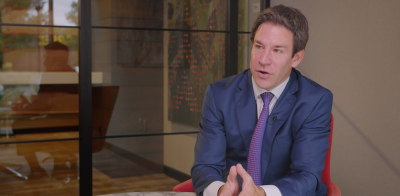Before we get into market and Fed commentary, we would like to congratulate all of our clients who listened to our “Time for Alts is Now” campaign and recently reduced their equity and bond allocations and increased their alternative exposures. Even after last week’s relief rally, the S&P 500 is still down over 6% for the year and the Barclay’s Agg is down almost 5.5%! Having now interacted with many of you the past five months, I cannot understate how professionally and personally exciting it is to see clients take action and have more optimal investment outcomes. And now, our analysis…
- For those who have not taken action yet, there is no need to fret: There is still plenty of time to increase alternative exposure, reduce duration, reduce beta, increase income and return potential while simultaneously reducing risk, which is a rare combination indeed. We urge you to take action and resist inertia.
- The key reasons why this can be accomplished is not only a function of attractive democratized alternative solutions, but also the continuing challenging environment for vanilla asset classes. We are certainly not calling for another lost decade for equities like the 10 years after the dot-com bubble. There is a nonzero probability that the S&P 500 finishes the year in the black. Furthermore, given the abrupt change in sentiment last week and the capital flows now barreling into U.S. equities, it is possible that equities make a higher high sometime this year or even this month! However, it is still difficult to imagine that market returns for this year and the next several years will look anything like the majority of the post-global financial crisis period. It is far more likely that markets remain a choppy, sloppy, volatile mess. Unfortunately for bonds, the outlook still remains bleak since duration is still high and barring a highly unlikely recession in the near term, yields should inexorably march higher. However, the good news is the markets have already adjusted to anticipated tightening through slightly compressed equity multiples, higher Treasury and corporate bond yields, and higher mortgage rates. The bad news is the Fed has only just hiked once and money supply growth has only barely slowed from last year’s levels.
- Now….onto the Fed: Last week the Fed took their second concrete step to tackle eye popping levels of inflation by raising interest rates by 25 bps and guiding markets to expect six more hikes this year. If enacted, this will take the Fed Funds rate to a 1.75% to 2% range by the end of 2022. The first step they took was the week before when the Fed finally stopped expanding their balance sheet at a torrid pace. Their intent is clear: Inflation has become a serious economic and political problem and gosh darn it, they’re going to do something about it! Notably, they chose strategic ambiguity on the game plan for balance sheet reduction.
- Prior to taking these decisive actions (hope you can appreciate the sarcasm), let’s review the cognitive dissonance of the Fed the past six months: 1) During Q3 and early Q4 of last year, they continued to assure everyone that inflation was transitory, despite ample evidence there was a reasonably high probability of a sustained inflationary surge, most notably due to the tightness of the labor market and a potentially perfect storm for a wage gain spiral. 2) Once they could no longer describe inflation as transitory with a straight face, they dropped that language and admitted the obvious: They would have to tighten monetary policy to attempt to constrain it. 3) However, instead of immediately ending quantitative easing, they continued to purchase Treasuries and agency mortgage backed securities to the tune of $197 billion the first 11 weeks of 2022 even as inflation kept making new 30-year–plus highs and home prices surged higher and higher. 4) The final kicker is that the week before the Fed’s first hike and unveiling of their plan to hike six more times this year due to the seriousness of the inflation problem, they finally brought themselves to end quantitative easing with a bang…by purchasing another $50 billion of securities! Hey team Fed, just a little advice for driving: You might not have to hit the brakes so hard if you take the pedal off the metal a bit earlier.
- If you, the reader, are confused by all of this, don’t feel bad, so are we…but don’t worry, Chairman Powell is highly confident the Fed can bring down inflation by carefully slowing economic growth and demand without raising the probability of a recession one iota. We’ll have more commentary in a few weeks on what appears to be the Fed’s game plan for now and why despite the past six months of clumsiness, they may actually pull off a soft landing of the economy.
- In the meantime, now that the Fed has stated its intent to bring short end rates from zero, one week ago, to 1.75% by the end of year, the investment implications are pretty simple: “Don’t fight the Fed…High Five the Fed!” How do you avoid fighting the Fed? Simple, minimize equity beta and duration and investments that tend to outperform when the Fed has rates at zero, is massively expanding their balance sheet, and cranking up money supply faster than nominal GDP growth and struggle when the Fed is doing the opposite.
- More importantly, how do you “High Five the Fed?” Easy, you take one or two or both of the following actions: 1) Increase exposure to strategies that may actually benefit from a higher Fed Funds rate, most notably floating rate debt. Given this period of geopolitical uncertainty and tragedy, we would recommend sticking with U.S. floating rate debt strategies that fall under two categories. They either have extremely low economic sensitivity and beta or if they have a higher beta, they trade at a significant discount to net asset value. 2) Increase exposure to strategies that may take advantage of market volatility by either carefully selling extremely rich volatility and buying back cheaper volatility elsewhere or trading around various asset classes’ shorter-term rallies and sell-offs.
To summarize, please do not let this period of heightened uncertainty and volatility lead to inaction by inertia or paralysis by analysis. Embrace strategies that benefit from the Fed’s chosen path of higher interest rates and cheer them on as they proceed. Eagerly anticipating the next Fed rate hike might not be as exciting as March Madness, but it sure beats sweating each and every hike. “High Five the Fed” all the way to potentially better investment outcomes!




